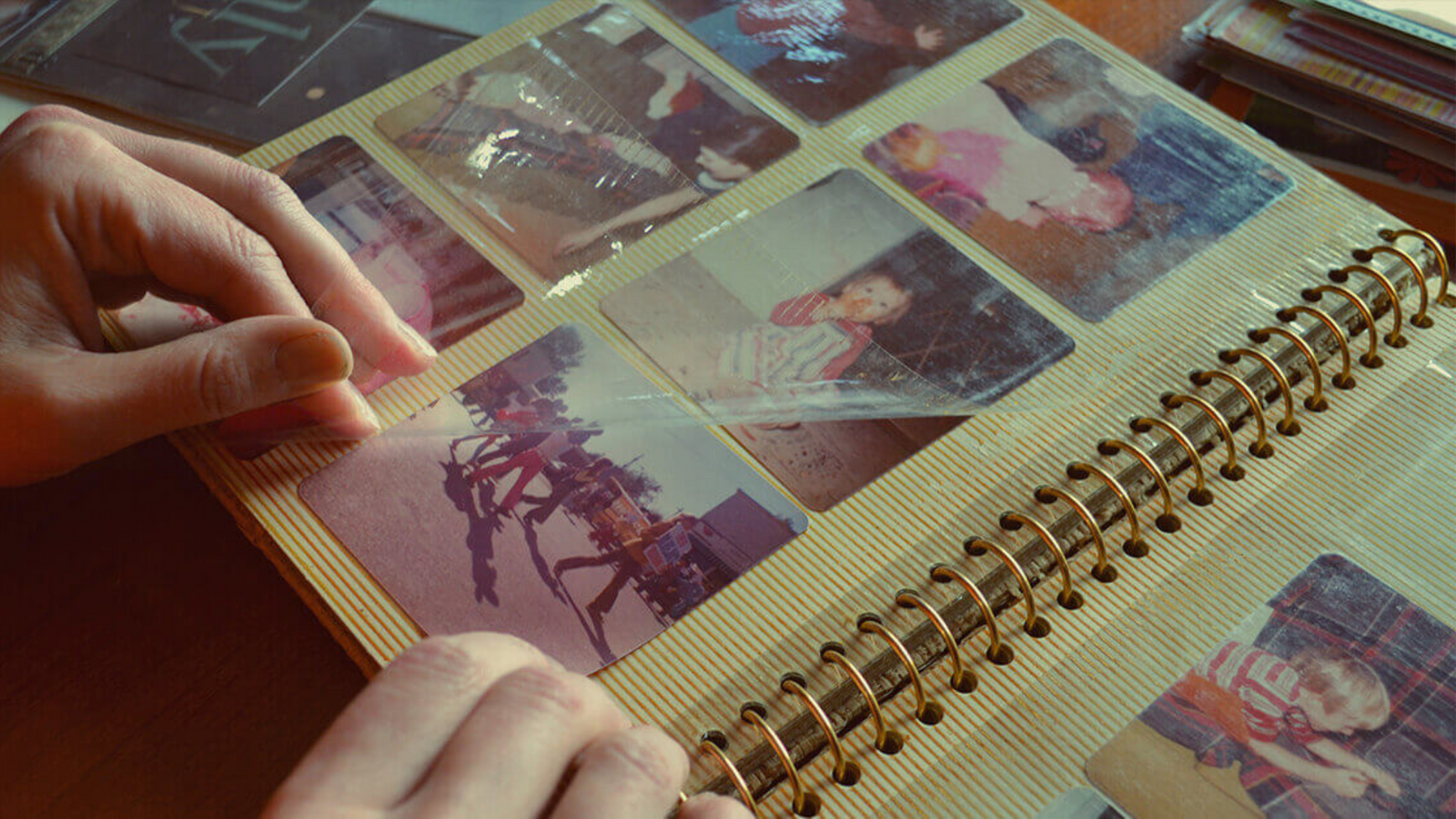Sticky sheet photo albums—sometimes called “magnetic” albums—were all the rage from the 1970s to the early 2000s. With their plastic film overlay and adhesive backing, they seemed like a great way to display family photos neatly in a 4 x 6 photo album. But time has revealed a hidden danger: photo sticking can cause irreversible damage to cherished prints.
If you’re worried about preserving old pictures from a photo album with sticky pages, you’re not alone. This guide will help you understand how these albums work, why they’re risky for your photos, and what you can do to preserve the memories safely.
Photo Album Sticky Pages: What Are They?
Sticky page photo albums use a glue-like substance under a plastic sheet to hold photos in place. Over time, the adhesive degrades, often turning yellow or brown and fusing with the back of the photo. While these albums were convenient and looked tidy, they now present a major challenge: damaged photo prints that are difficult to remove without tearing.
What to Do If Your Photo Album Is Causing Photo Sticking
If your pictures seem stuck, do not tug or peel them off hastily. That can tear the photo paper or leave residue that further degrades the image. Here’s what experts recommend:
-
Try gentle heat: Use a hairdryer on a low setting to soften the adhesive through the back of the album page.
-
Use dental floss: Gently slide dental floss behind the photo in a sawing motion to loosen the bond.
-
Avoid water or chemicals: These may cause ink bleeding or paper warping.
-
Digitize before attempting removal: If the photo is visible through the plastic, a high-resolution scan or photo capture may preserve it digitally before you try to remove it.
If this all sounds risky, you’re right. That’s why many families now rely on America’s best photo scanning service for professional help.

Sticky Sheet Photo Albums vs. Sleeved Albums
Not all albums are sticky. Some use plastic sleeves instead of adhesive, and those tend to hold up much better over time.
-
Sticky Sheet Albums: Risk of glue degradation and photo sticking. Can lead to warped or discolored photos.
-
Photo Album with Sleeves: Typically safer for long-term storage but still at risk from heat, humidity, and aging materials.
Whichever type you have, it’s worth considering digitization as a long-term solution. Learn more about the difference.
Why You Should Digitize Your Photo Album
Physical photo albums are vulnerable—to sticky glue, fading ink, water damage, and time. Digitizing helps preserve not just the images but also the emotions tied to them.
When you scan a photo album with Heirloom, each page is handled with care. You can even digitize photo albums with sleeves or mixed-format albums. Once uploaded, you can organize them by year, event, or person—something you can’t do with DVDs.

FAQ: People Also Ask
How do you get photos out of sticky photo albums?
Use a hairdryer on low heat or dental floss to gently separate the photo. Be careful not to tear the photo. For priceless images, consider professional scanning first.
What are sticky photo albums called?
They’re often referred to as magnetic albums, though there’s no magnet involved—just adhesive that holds the photo in place under a plastic film.
Can photos be damaged in sticky albums?
Yes. Over time, the adhesive can discolor, warp, or fuse to the photo. Attempting to remove stuck photos without care can cause permanent damage.
Should I digitize my sticky photo albums?
Absolutely. Digitizing protects your memories from glue degradation, discoloration, and physical damage, and makes them easier to share and enjoy online.

📧 Want more tips like this?
Subscribe to Heirloom emails to learn how to preserve your priceless memories. Get discount codes for expedited shipping, quality digitizing, and secure cloud storage. We never spam, and it’s easy to unsubscribe at any time.



